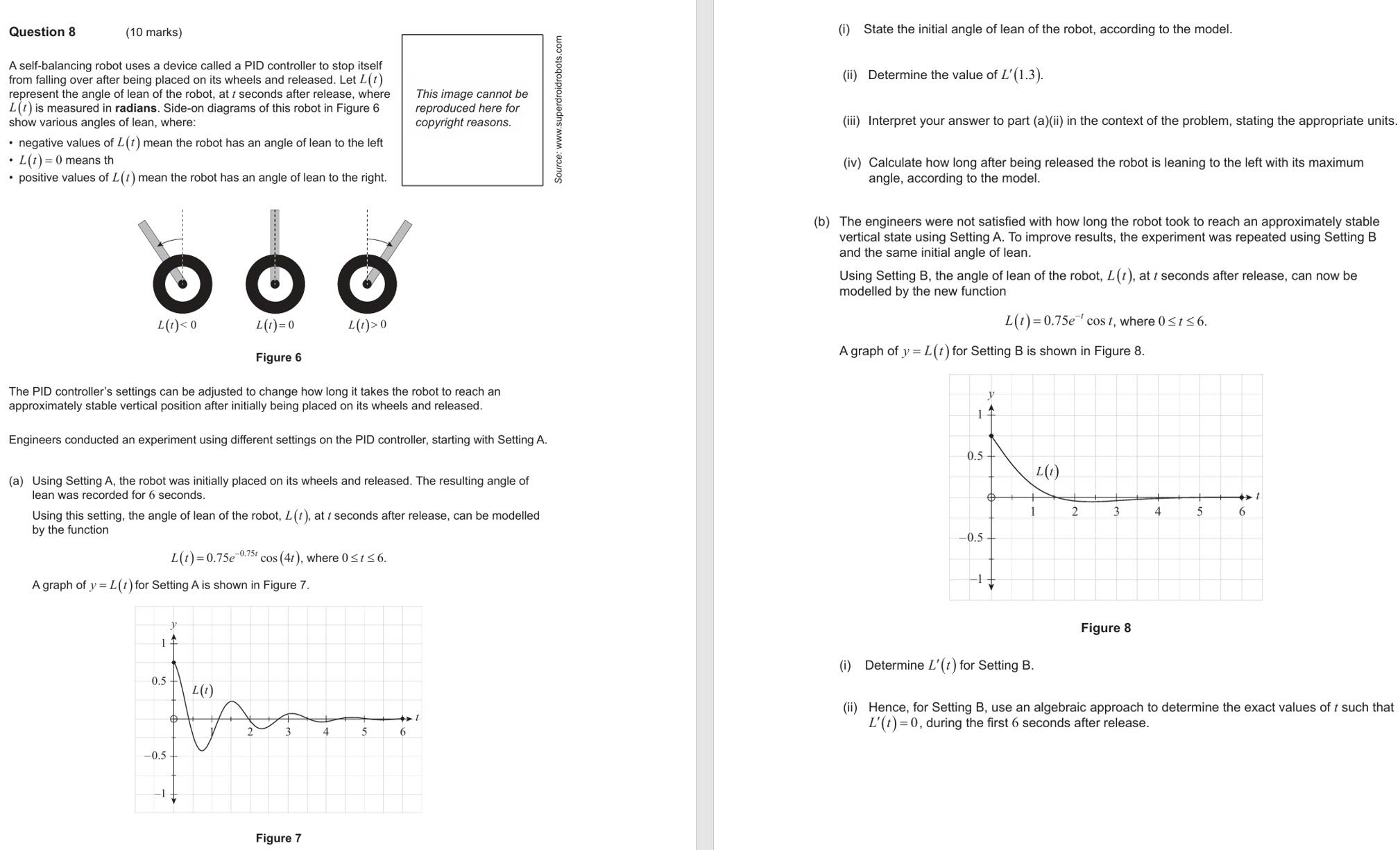The Ministry of Education and Training released the answer keys for the high school graduation exams on the evening of 6/7. The 2025 math exam, the first under the new curriculum, consisted of three sections: multiple choice (12 questions), true/false (4 questions), and short answer (6 questions). Students had 90 minutes to complete the exam.
Nguyen Quang Thi, a teacher at Bao Loc High School in Lam Dong Province, noted that the first 12 multiple-choice questions were fundamental, covering derivatives, integrals, statistics, equations, inequalities, and geometry. The second true/false section was more challenging, focusing on the application of derivatives, integrals, statistics, and spatial geometry. The third section, comprising six short-answer questions, was designed to differentiate students. The two most difficult questions (code-breaking and book arrangement) involved combinatorics and probability.
Teachers generally agreed that the math exam was effectively differentiating, particularly the true/false section, which discouraged random guessing compared to the previous entirely multiple-choice format.
Dr. Nguyen Phu Hoang Lan, a lecturer at the University of Education, Vietnam National University, Hanoi, believes that maintaining this exam format will help reduce the pressure of extra tutoring. Students with strong critical thinking skills and a solid grasp of the material can achieve high scores without resorting to test-taking tricks.
However, a drawback is the lengthy data presented in the real-world math problems. Thi pointed out that in the true/false section, two out of four questions were real-world problems, and in the short-answer section, five out of six were, resulting in a 4-page exam.
"The math exam is heading in the right direction, aligning with the 2018 education program, but the questions need to be phrased more concisely and clearly, focusing on the core content and avoiding the current convoluted and confusing language," commented Dr. Tran Nam Dung, Vice Principal of the High School for Gifted Students, Vietnam National University, Ho Chi Minh City.
 |
High school graduation exam takers in Ho Chi Minh City on 26/6. Photo: Quynh Tran |
High school graduation exam takers in Ho Chi Minh City on 26/6. Photo: Quynh Tran
Lam Vu Cong Chinh, a math teacher at Nguyen Du High School in Ho Chi Minh City, argued that the real-world elements in some problems were unnecessarily lengthy and added to the students' confusion. He cited the code-breaking problem as an example, suggesting a more straightforward phrasing:
Select six numbers from the set S={11, 12, 13, 14, 15, 16, 17, 18, 19} and place each number in one of the six positions A, B, C, M, N, P as shown in the figure, such that each position is filled with only one number. How many ways are there to choose six numbers from set S and arrange them in the positions so that the triplets of numbers appearing in the positions (A, M, B), (B, N, C), and (C, P, A) form arithmetic progressions in that order?
Chinh believes the objective of this problem is to find the number of arrangements. Asking for the probability adds an unnecessary calculation step. Instead of a convenient integer result for the number of arrangements, asking for probability leads to a less straightforward answer, requiring an additional conversion step.
"The wording is quite confusing. The real-world element is just a superficial layer, forcing students to perform extra calculations without any real-world significance," Chinh said.
 |
The code-breaking problem, one of the two most challenging questions on the high school graduation math exam. Photo: Screenshot |
The code-breaking problem, one of the two most challenging questions on the high school graduation math exam. Photo: Screenshot
Similarly, Dr. Dung argues that the lengthy questions require excessive reading and comprehension time, making the 90-minute time limit unreasonable. He suggests 120 minutes would be more appropriate.
"Length itself adds difficulty. Even if the underlying concept is simple, the time spent reading, understanding, and summarizing is much more demanding than solving a straightforward problem like an equation, evaluating an expression, or finding the minimum value of a function," Dung explained.
However, Dr. Lan contends that requiring students to read, understand, and summarize is a reasonable expectation for real-world problems. The process of interpreting, modeling, and translating a problem into a mathematical form is normal, even if it takes more time than a purely mathematical question.
"I think students should have the ability to summarize and comprehend, even in math. This is a requirement of the curriculum and reflects real-world demands," the lecturer said.
Lan pointed out that math problems in the International Baccalaureate (IB), British A-levels, South Australian Certificate of Education (SACE), and Programme for International Student Assessment (PISA) are also presented with lengthy descriptions. He believes the current phrasing of the high school graduation math exam is comprehensive yet appropriate for the students.
 |
A question from the 2023 South Australian Certificate of Education (SACE) math exam. Photo: Screenshot |
A question from the 2023 South Australian Certificate of Education (SACE) math exam. Photo: Screenshot
According to Dr. Lan, real-world math problems are difficult to present more concisely. Their purpose is to assess students' mathematical modeling and problem-solving skills, requiring them to identify mathematical elements, define variables, formulate equations, and find solutions.
"These problems allow for a more precise evaluation of students. We can differentiate between those who can formulate and solve equations independently and those who can only solve pre-formulated equations," Lan explained.
Furthermore, real-world problems require detailed explanations and conditions to ensure students understand them correctly and that there is only one correct answer.
Dr. Dung and Thi disagree. Dung believes the convoluted phrasing is a technical issue that can be addressed. Both suggest reducing the number of real-world problems and shortening the exam to fit the 90-minute time limit.
"The questions should be phrased more concisely and directly. Halving the number of real-world problems and shortening the exam to three pages would be appropriate," Dung suggested.
Additionally, Thi and Chinh propose reducing the number of questions based on 11th-grade material and eliminating 10th-grade content altogether.
"Each additional question requires students to study an entire chapter, leading to overload. The 12th-grade curriculum is already extensive; there's no need to include so much 10th and 11th-grade material," Thi observed.
The 2025 high school graduation exam scores will be released on 16/7.
Le Nguyen - Duong Tam












